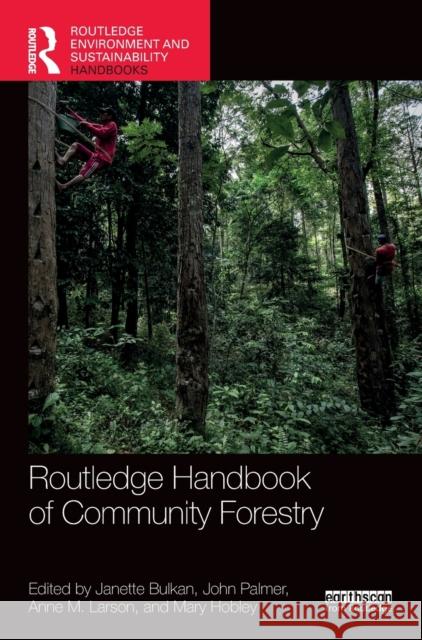Routledge Handbook of Community Forestry » książka



Routledge Handbook of Community Forestry
ISBN-13: 9780367488697 / Angielski / Twarda / 2022 / 562 str.
Routledge Handbook of Community Forestry
ISBN-13: 9780367488697 / Angielski / Twarda / 2022 / 562 str.
(netto: 1033,51 VAT: 5%)
Najniższa cena z 30 dni: 1080,89 zł
ok. 16-18 dni roboczych.
Darmowa dostawa!
This handbook provides a comprehensive overview and cutting-edge assessment of community forestry.
Wydanie ilustrowane
1. Introduction Part 1. Spaces for community forestry in State- and timber-dominated landscapes 2. The difficult art of carving space(s) for community forestry in the Quebec regime. 3. Community forestry in extractive reserves: The story of Verde para Sempre in Pará State, Brazil. Part 2. Multi-level governance and new governance approaches – Global 4. Non-timber forest product value chain development: Lessons from a University’s 20-year partnership in the Maya Biosphere Reserve. 5. Pathways to community timber production: A comparative analysis of two well-established community-based forest enterprises in Mexico and Brazil. 6. Social Forestry and land tenure conflicts in Indonesia. 7. Commercial timber plantations as a means to land and economic restitution in South Africa. 8. Community forestry in Australia: Caring for Country, land, and the bush. Part 3. Inter-agency collaborations in Community Forestry – USA 9. Old World and New World collision: Historic land grabs and the contemporary recovery of Indigenous land management practices in the western USA. 10. Community forest ownership, rights, and governance regimes in the United States. 11. Community-based forestry in the western United States: Reimagining the role of communities in federal forest management. 12. The Weaverville Community Forest: Putting community in the forest. 13. Community management of Native American, municipal, and private managed forests in northern California, USA. Part 4. Voluntary forest certification schemes in community forestry 14. Unfinished business: Rethinking certification for smallholders in Southeast Asia. 15. An assessment of FSC certification solutions for smallholders and community-managed forests. 16. Environmental and socio-economic impacts of community forestry and individual small-scale logging in Cameroon. Part 5. Indigenous forestry / all forest values including Traditional Ecological Knowledge (TEK) 17. The Mistik story: A community forestry approach to large-scale industrial forest management and production. 18. Listening watchfully: Following the Liìl̓wat pathway towards reciprocal and relational forest research, in Liìl̓wat Indigenous Territory, British Columbia, Canada. 19. 'We all have this mother’: Land tenure conflicts and Indigenous forest communities in Argentina. Part 6. Community forestry associations, gender, landscapes 20. Community forestry in British Columbia, Canada: History, successes, and challenges. 21. Achieving political rights, enhancing forest livelihoods: Latin American Indigenous and Afrodescendant women’s views. 22. ‘Community’ agroforestry and landscape restoration: Towards recognition of the trade-offs and externalities of tree planting. 23. ‘If there is jangal (forest), there is everything’: Exercising stewardship rights and responsibilities in van panchayat community forests, Johar Valley, Uttarakhand, India. Part 7. Politics and power in community forestry 24. Disempowering democracy: Local representation in community and carbon forestry in Africa. 25. Community forestry in Myanmar: Centralised decentralisation under conflictual authoritarianism – not yet rights-based resource federalism. 26. Village forestry under donor-driven forestry interventions in Laos. 27. Decoupling agendas: Forestry reform, decentralisation, and Cambodia’s model of community forestry, 1992–2020. 28. Liberia’s Private Use Permits: Elite capture and dubious community title documents. 29. Community forestry in the changing political and social context of Nepal. Part 8. New directions in community forestry 30. Mexican community forestry as a global model for biodiversity conservation and climate change adaptation and mitigation. 31. Community-based empowerment through land reform in Scotland: The case of forest ownership. 32. Dynamics in community forestry in the Netherlands: Impacts of changing cultural ecological knowledge. 33. Conclusion: Some paths ahead for community forestry
1997-2025 DolnySlask.com Agencja Internetowa
KrainaKsiazek.PL - Księgarnia Internetowa









